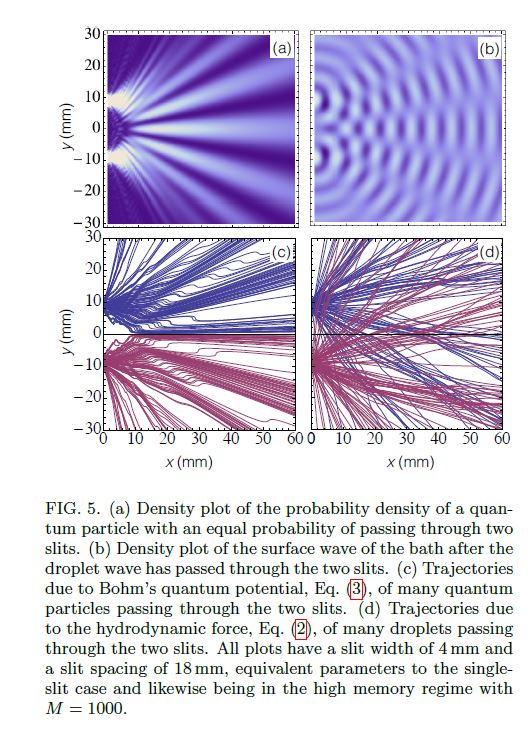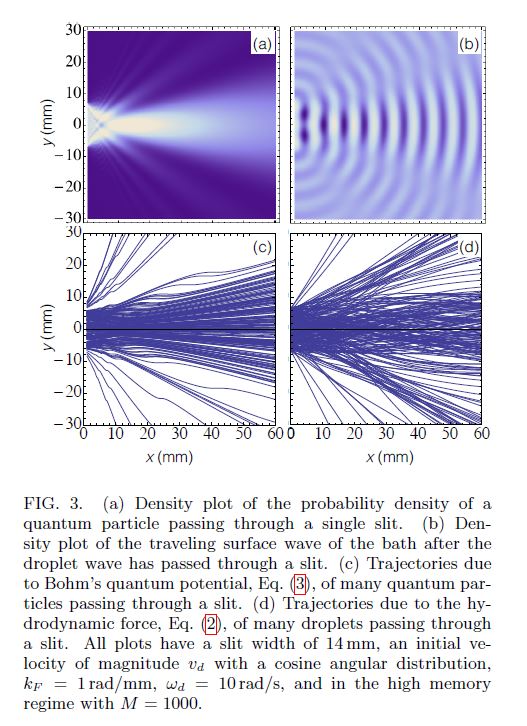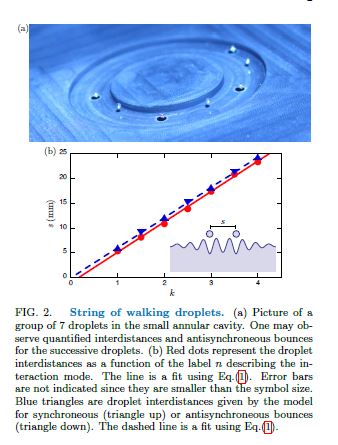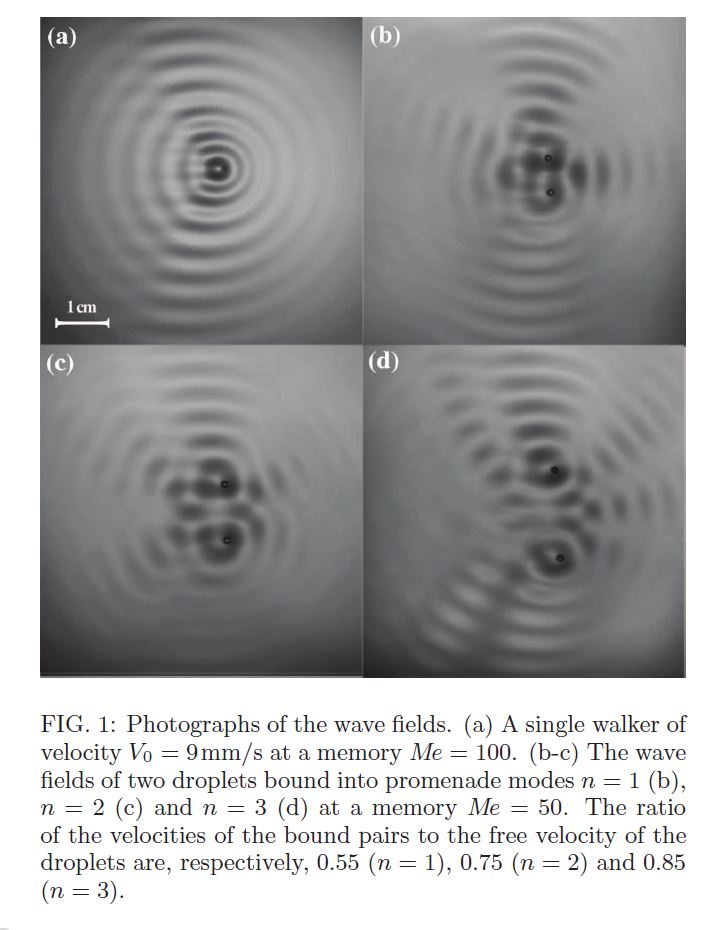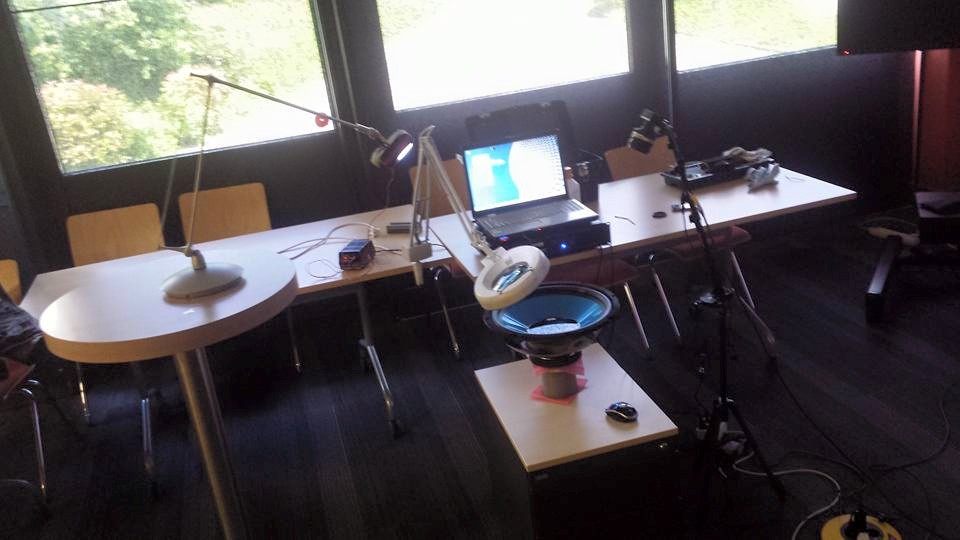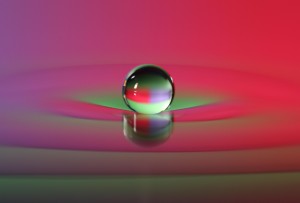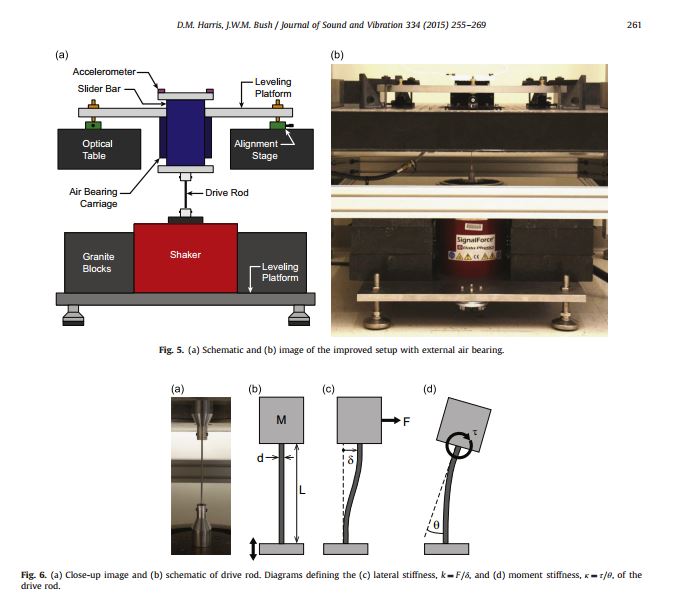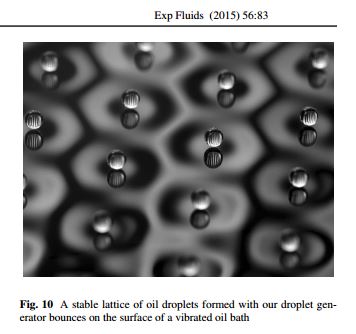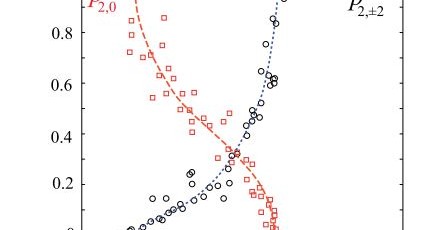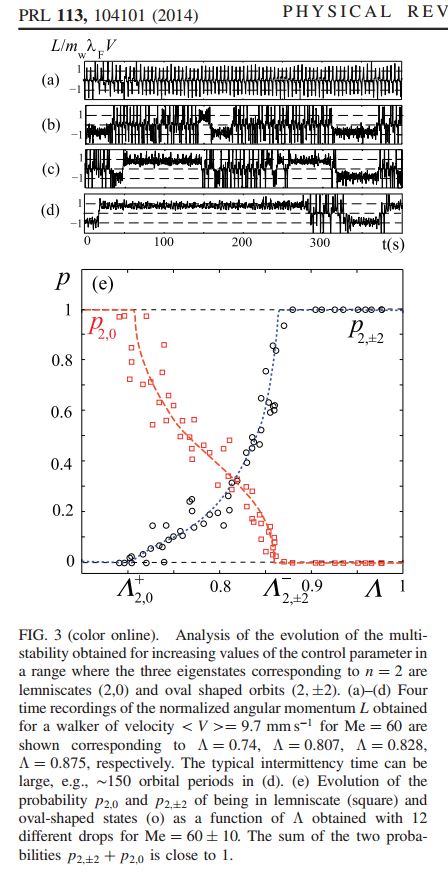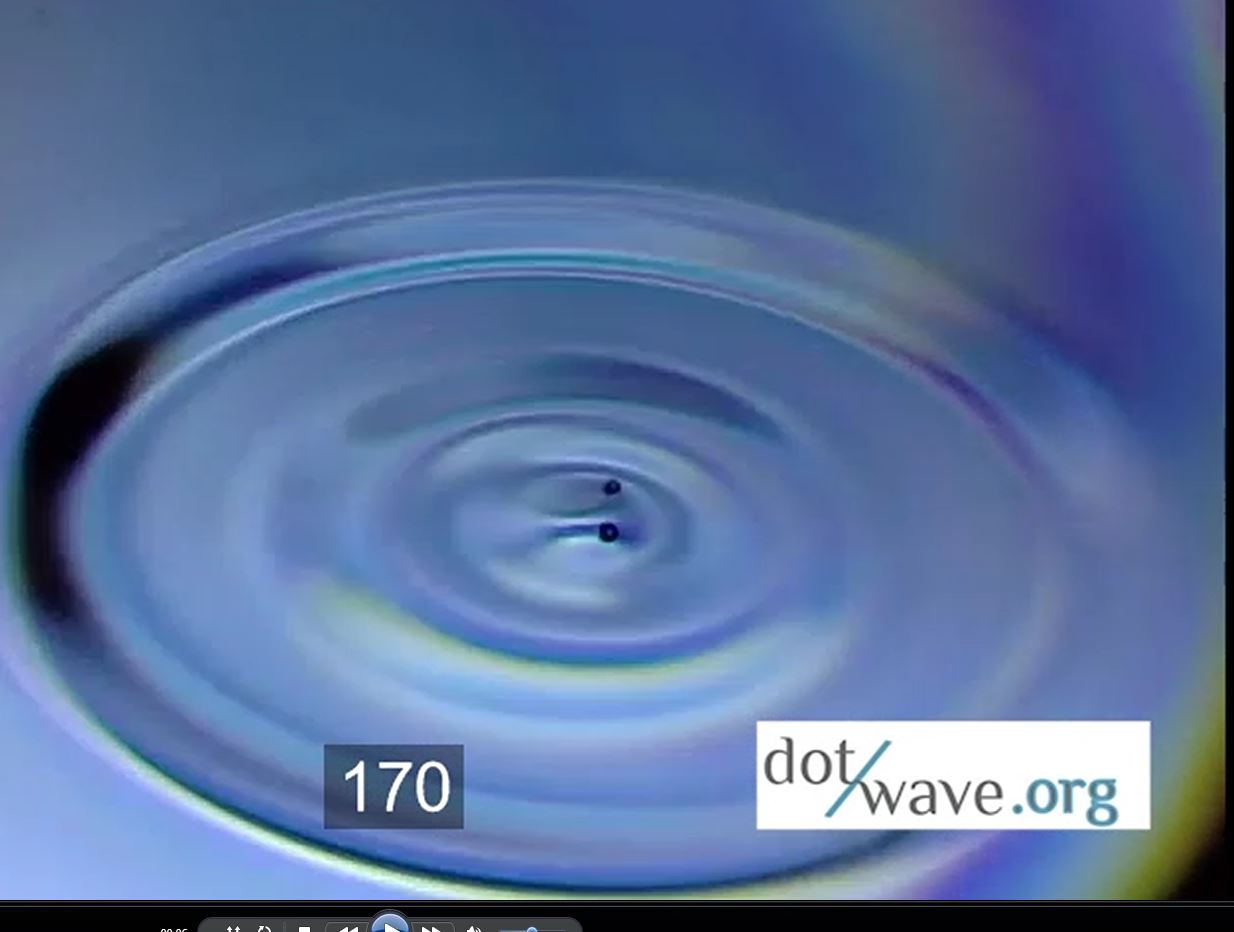Perrard, S. (2014). Une mémoire Ondulatoire: états propres, chaos et probabilités (Doctoral dissertation, Paris 7)
Résumé : Une goutte rebondissant sur un bain de liquide en vibration verticale peut se mettre spontanément en mouvement, sous l’action des ondes qu’elle a elle-même générées. Celles ci, appelées ondes de Faraday sont entretenues par la vibration du bain durant un temps de mémoire qui peut être contrôlé expérimentalement. Le champ d’ondes stationnaires généré par la goutte contient ainsi dans ses motifs d’interférence une mémoire de la trajectoire précédemment suivie. L’entité résultante appelée marcheur est caractérisée par cette interaction entre la goutte et les ondes qui l’entourent, via la mémoire de chemin. Cette thèse est consacrée à l’étude expérimentale et théorique de cette mémoire de chemin. Dans ce but, une goutte de liquide encapsulant un volume de ferrofluide est piégée dans un puits de potentiel harmonique d’origine magnétique. La goutte sera ainsi amenée à interagir avec les ondes qu’elle a précédemment générées. Ce confinement induit un processus d’auto-organisation entre la goutte et l’onde sous-jacente qui mène à des comportements de type ondulatoire pour une particule. Les notions de quantifications ou de probabilité de mesure d’un état propre peuvent ainsi être appliquées au cas d’un marcheur. Ces comportements révèlent que le marcheur est un exemple d’objet étendu en temps qui ne peut être réduit à une approximation ponctuelle rappelant, dans un tout autre contexte, la théorie de l’onde pilote développée par de Broglie au début du XXème siècle
A droplet bouncing on a vertically vibrated liquid bath can be self-propelled by the surface waves it generates. Theses Faraday waves are sustained by the vertical bath vibration for a memory time which can be tuned experimentally. The wave field thus contains in its interference pattern a memory of the past-trajectory. The resulting entity called a walker is characterized by the interaction between the drop and its surrounding waves through this path-memory. This thesis is devoted to an experimental and theoretical investigation of such a wave-mediated path-memory. For this purpose a bouncing drop is magnetically loaded with a droplet of ferrofluid and can then be trapped in an harmonie well. The drop is thus forced to interact with its own path. The confinement induces a self-organization process between the particle and its wave packet, leading to wave-type behavior for a particle. Notions such quantization or probability of measuring an eigenstate can thus be used for the walker dynamics description. These features originate from the temporal coherence of the walker’ s dynamics. In that sense, the walker is an entity extended in time, we cannot reduce to a point-like approximation. It reminds us, in another context, the pilot wave theory developped by de Broglie at the beginning of the XXst century.
https://tel.archives-ouvertes.fr/tel-01158368/document






